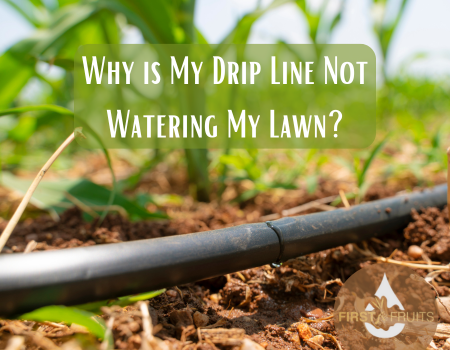If you have a drip line irrigation system, you likely had it installed so that you could enjoy a more hands off and hassle-free approach to lawn care. But what happens when your system starts to act up? Just like many things, even if your drip lines were installed properly, they still need maintenance and in some cases repairs or replacements. While there are a few different common issues that may arise with a drip line irrigation system, one of the most common is the line no longer watering your lawn or flower beds. So, what do you do?
Fixing Your Drip Line
First and foremost, check for clogged drippers or emitters. Over time, mineral deposits or debris can accumulate, obstructing the flow of water. This can lead to certain areas of your lawn not receiving adequate hydration if any at all. Regular maintenance, including cleaning or replacing clogged emitters is essential to keep your system running smoothly. Additionally, ensure that the pressure within the system is correct by installing a suitable pressure regulator.
Another common issue that could be preventing your drip line from watering your lawn is a malfunctioning backflow valve. If the handle on the backflow valve is accidentally closed, it restricts the flow of water to the sprinkler system valves, thus cutting off water supply to your lawn. Regularly inspecting and maintaining the backflow valve can help prevent this issue from occurring and ensure that your lawn or plants are receiving the water they need.
In regions with heavy rainfall, like the Pacific Northwest, rain sensors are commonly used to prevent irrigation systems from running unnecessarily. However, a faulty rain sensor can mistakenly prevent your drip line system from watering your lawn, even when it’s dry. Ensure that your rain sensor is functioning correctly by testing it periodically and replacing it if necessary.
One of the unique characteristics of a drip line system is that it operates underground, making it challenging to determine if it’s working correctly. However, after running the system for several minutes, you should be able to see if the soil is damp, indicating that the drip line has effectively watered those sections of your lawn.
If despite your efforts, your drip line irrigation system continues to underperform, don’t hesitate to seek professional help. Landscaping professionals have the expertise to diagnose and resolve issues with your system efficiently, ensuring that your lawn receives the hydration it needs to thrive. Contact our team of professionals at First Fruit Landscaping today to make sure your lawn is looking it’s best and ready for Summer!

